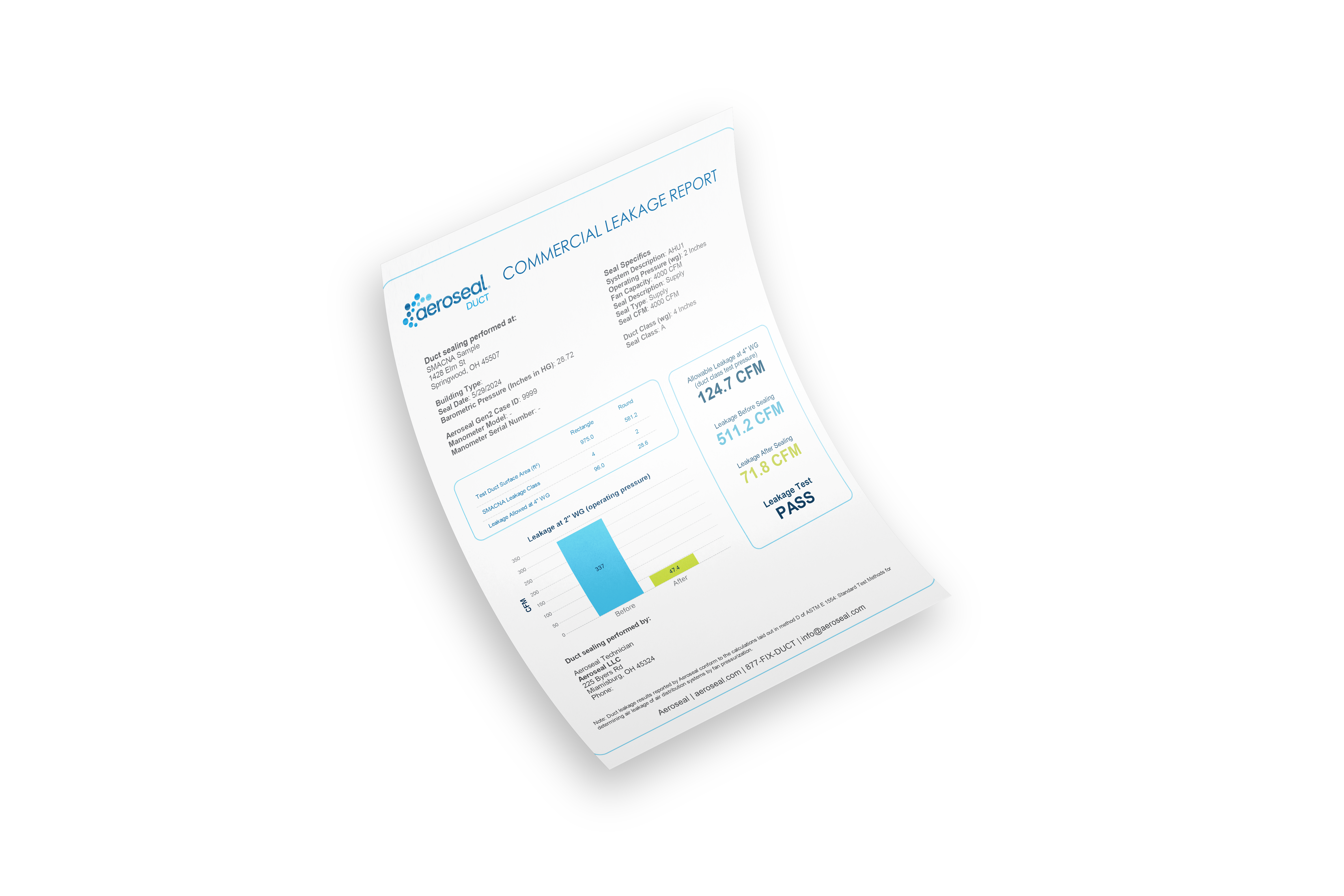Case Study
Glenwood Junior High School
Project Overview
Location
Princeton, West Virginia
Building
Glenwood Junior High School
Aeroseal Contractors
Air Duct Solutions
Contract Engineer
ZMM Architects & Engineers
Goal
Reduce duct leakage for maximum efficiency
Before Aeroseal
5,131 CFM of leakage
After Aeroseal
2,359 CFM of leakage
Results
Aeroseal eliminated 2,772 CFM of leakage – or 6.93 tons of cooling – well below the leakage rates demanded by building code
Glenwood Junior High School Fixes Hot/Cold Spots in Classrooms using Aeroseal
Facility engineers replaced the 30-year-old HVAC equipment and sealed the ductwork with Aeroseal to fix HVAC issues, increase energy efficiency, and meet building codes.
For the teachers at Glenwood Junior High School in Princeton, West Virginia, it was all about comfort. Depending upon the time of the day, classrooms on one side of the building were either sweltering hot or frigid cold – and with only a few thermostats controlling the entire building, it seems like a constant fight to stay comfortable. For the engineers, however, it was all about efficiency. The school administrators were looking to save money and the 30-year-old HVAC system was just not cutting it anymore.
There were a lot of questions beforehand regarding the use of the spray sealant in a classroom setting, but the results proved any prior concerns unnecessary. The sealing was completed in the evening and the school was open for business the next day. I have not heard of any complaints whatsoever regarding the smell or the possible spread of sealant in the classroom. Everybody was satisfied.
Gary Bailey
Maintenance Director - Mercer County Office of Education
However, an inspection of the ductwork revealed duct issues that hinder the performance of the new HVAC equipment install. Specifically, the interior of the air duct system was lined with a fiberglass insulation and some of the dirtiest ductwork the contractor had ever seen. They could clean the ducts, but chances were good that air leaks in the ducts were responsible for the dirt get there. If the school hoped to keep the ducts cleaned and get the level of energy efficiency and performance promised by the new VAV HVAC system, then they would need to test and seal the ductwork too.
After lengthy research to determine the best approach to sealing the ducts, Aeroseal duct sealing was added to the scope of work (SOW) performed by Air Duct Solutions. It would work to seal the entire air duct system from the inside – despite the fact that it was lined with insulation. Using the Aeroseal technology also meant that they wouldn’t have to tear into the ceilings to access the ducts or spend time and labor trying to locate and seal the leaks by hand.
Plus, the duct sealing time using Aeroseal is quicker than hand sealing alone. In fact, Air Duct Solutions promised they could seal the entire system over Easter break and have the school ready for the students’ return immediately following the project. The Aeroseal crew began duct sealing at the beginning of the holiday. They divided the system into several sub-sections, sealing each one individually. They were finished on a Sunday and the students returned to class the following morning.

Results
The computer-controlled Aeroseal process generates a Certificate of Completion at the end of each job showing the pre-seal and post-seal duct leakage (CFM). Before sealing, the air duct system had a whopping 5,131 CFM (cubic feet per minute) of leakage. After sealing with Aeroseal, the leakage was reduced by 2,772 CFM, and the leakage rate was also made compliant with current new construction duct sealing codes.
“On this project, the Aeroseal process saved tons of cooling,” said Sam Butzer, project engineer, ZMM Architects & Engineers. “We’ll have a more efficient system using less energy doing a much better job heating and cooling the school building. When it comes to remodel or renovation projects, there really isn’t a (better) alternative.”







